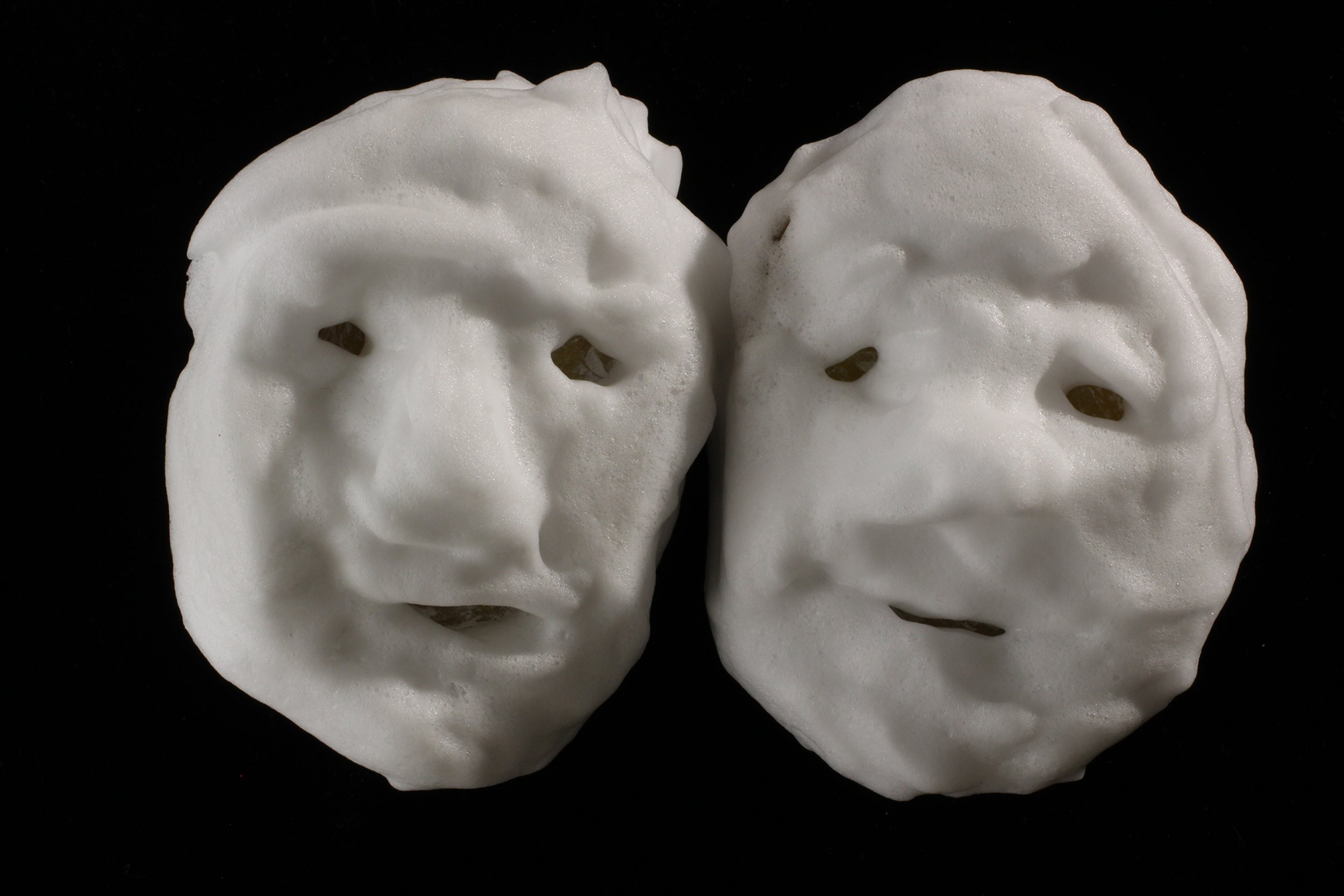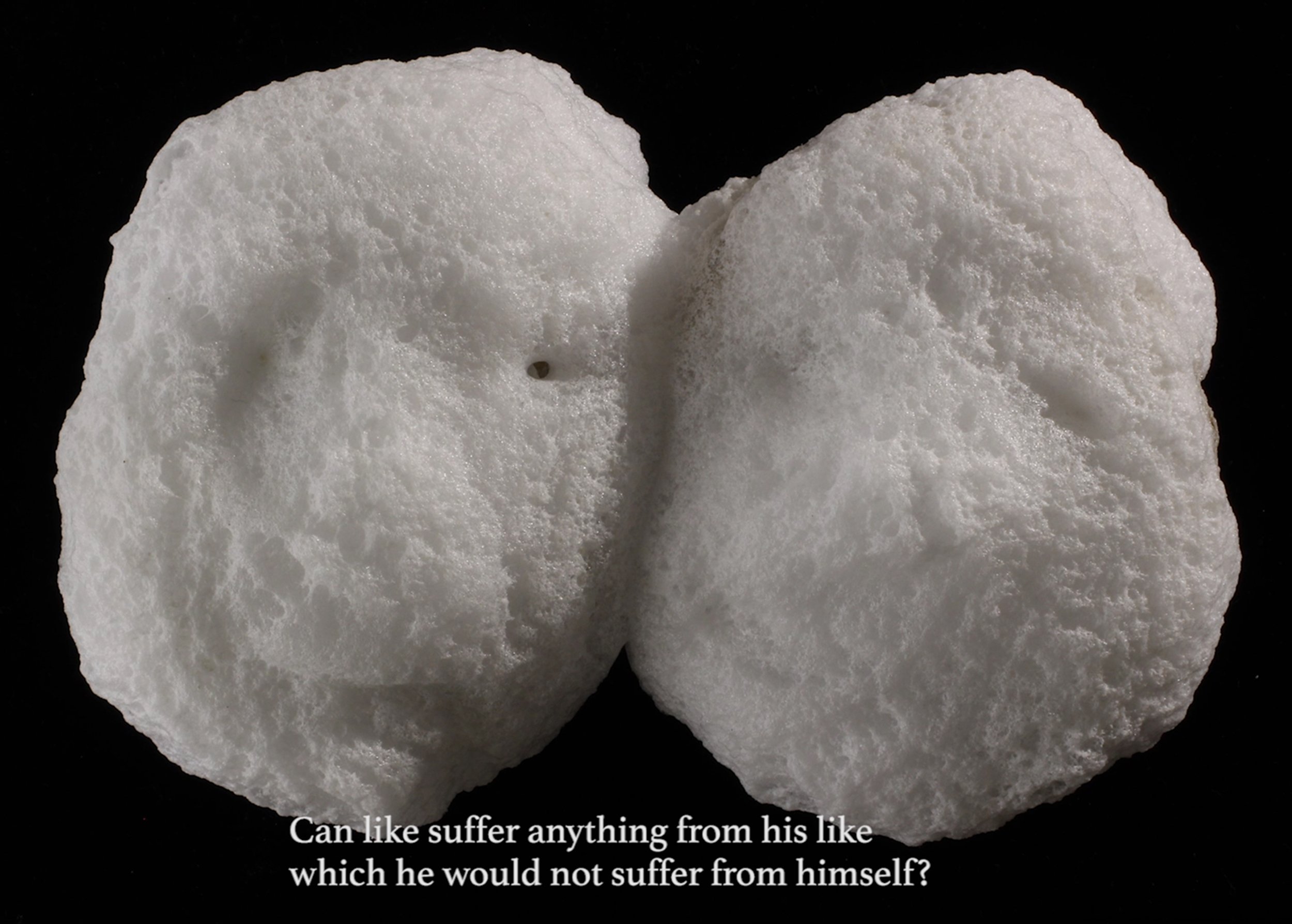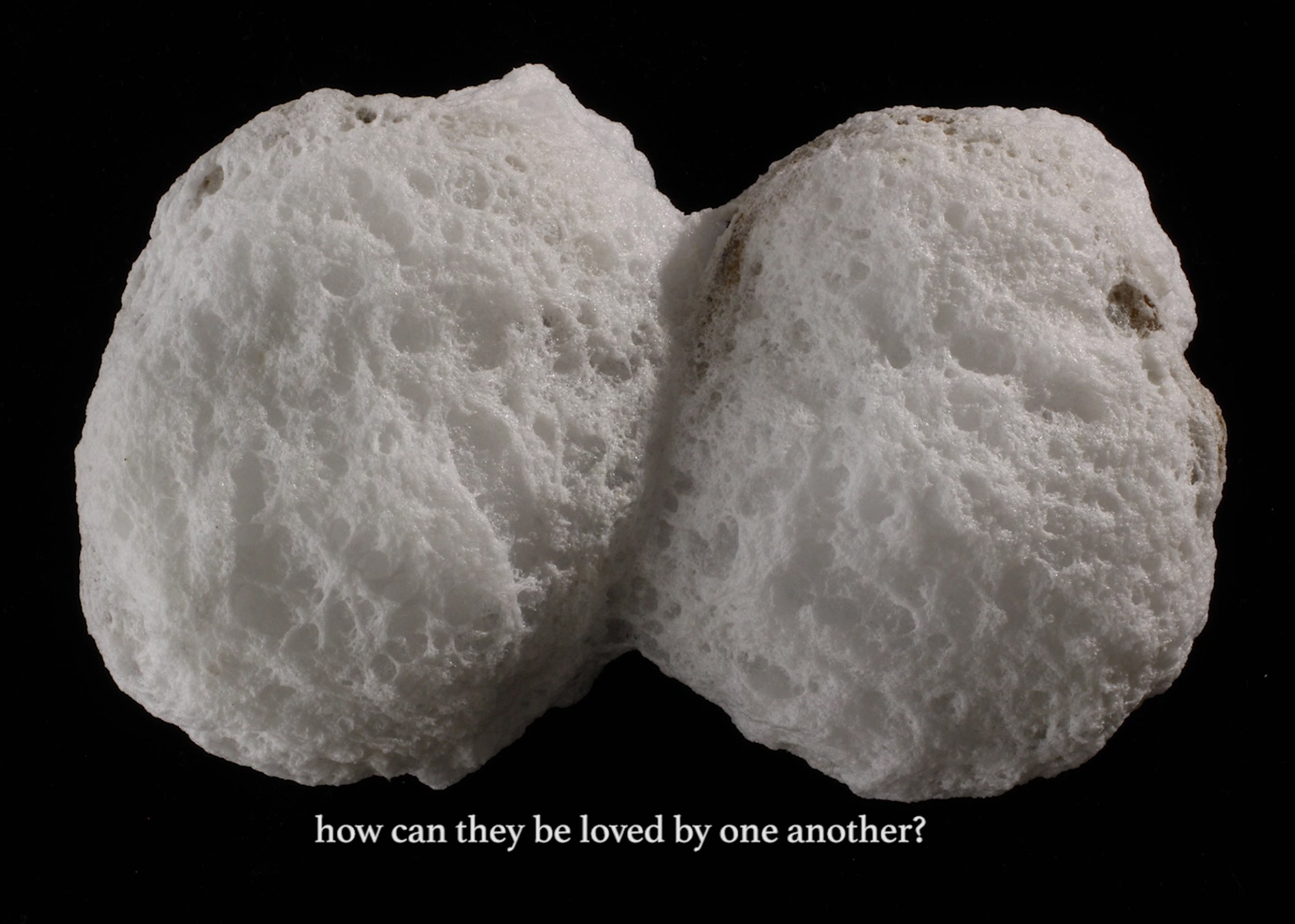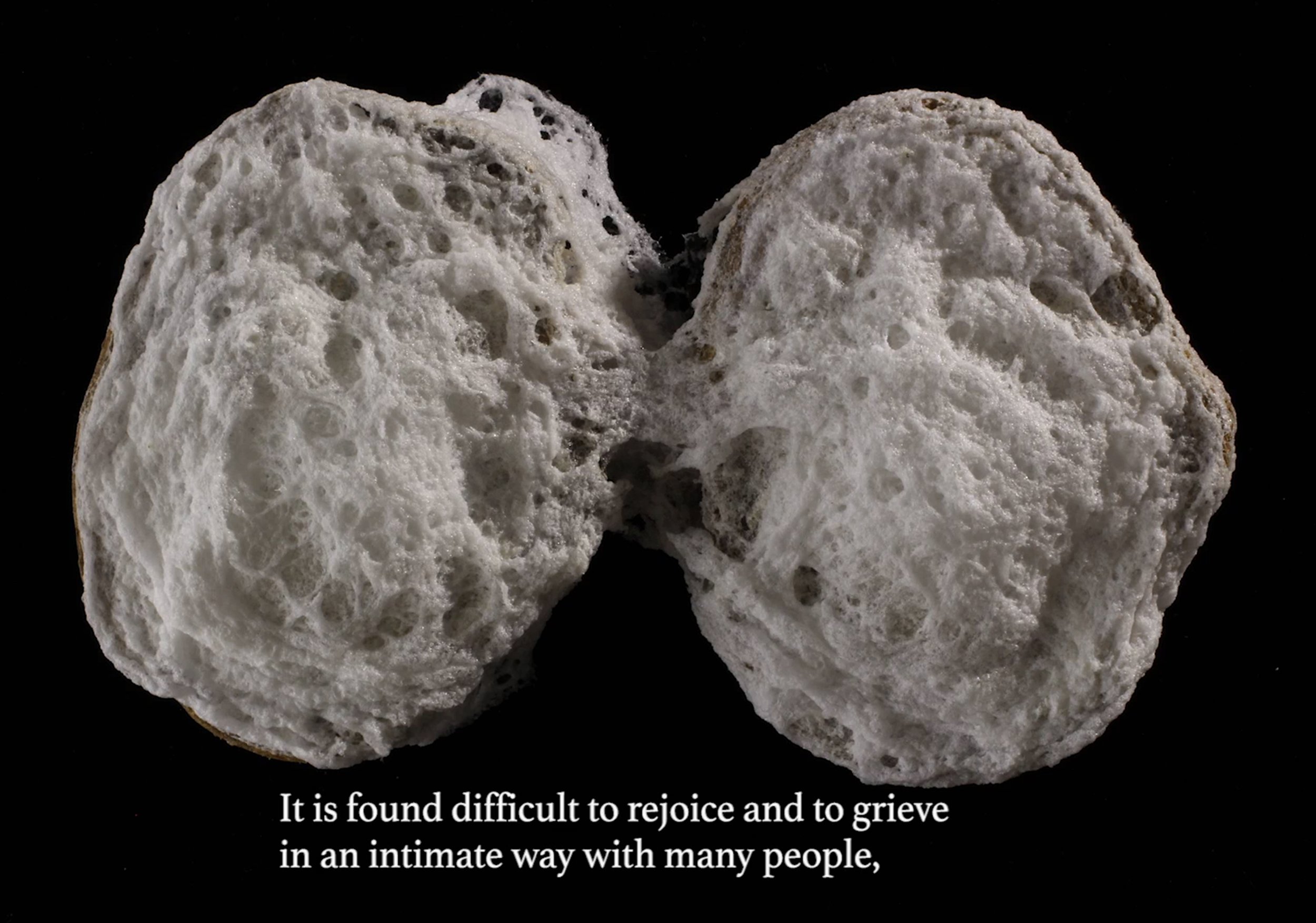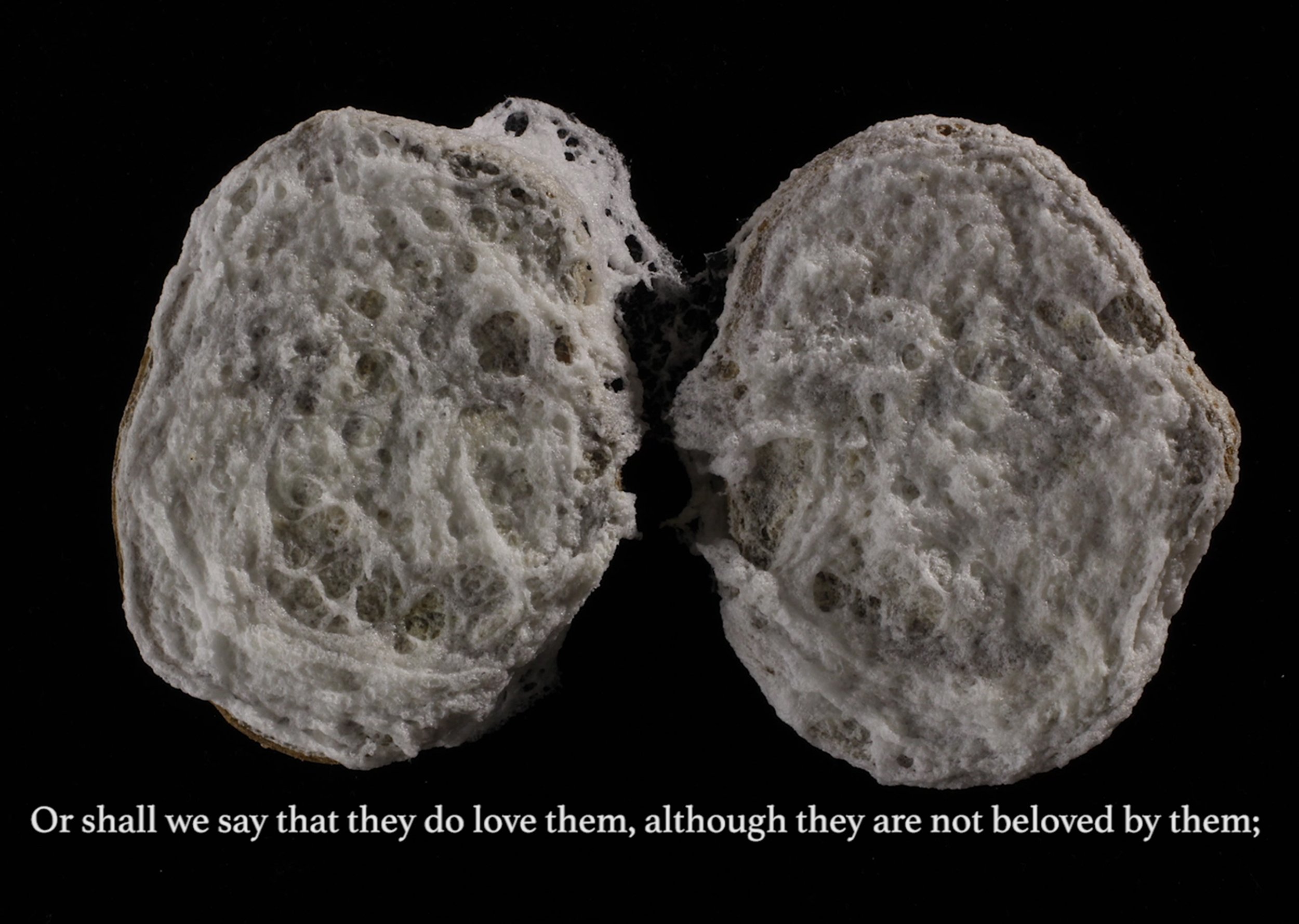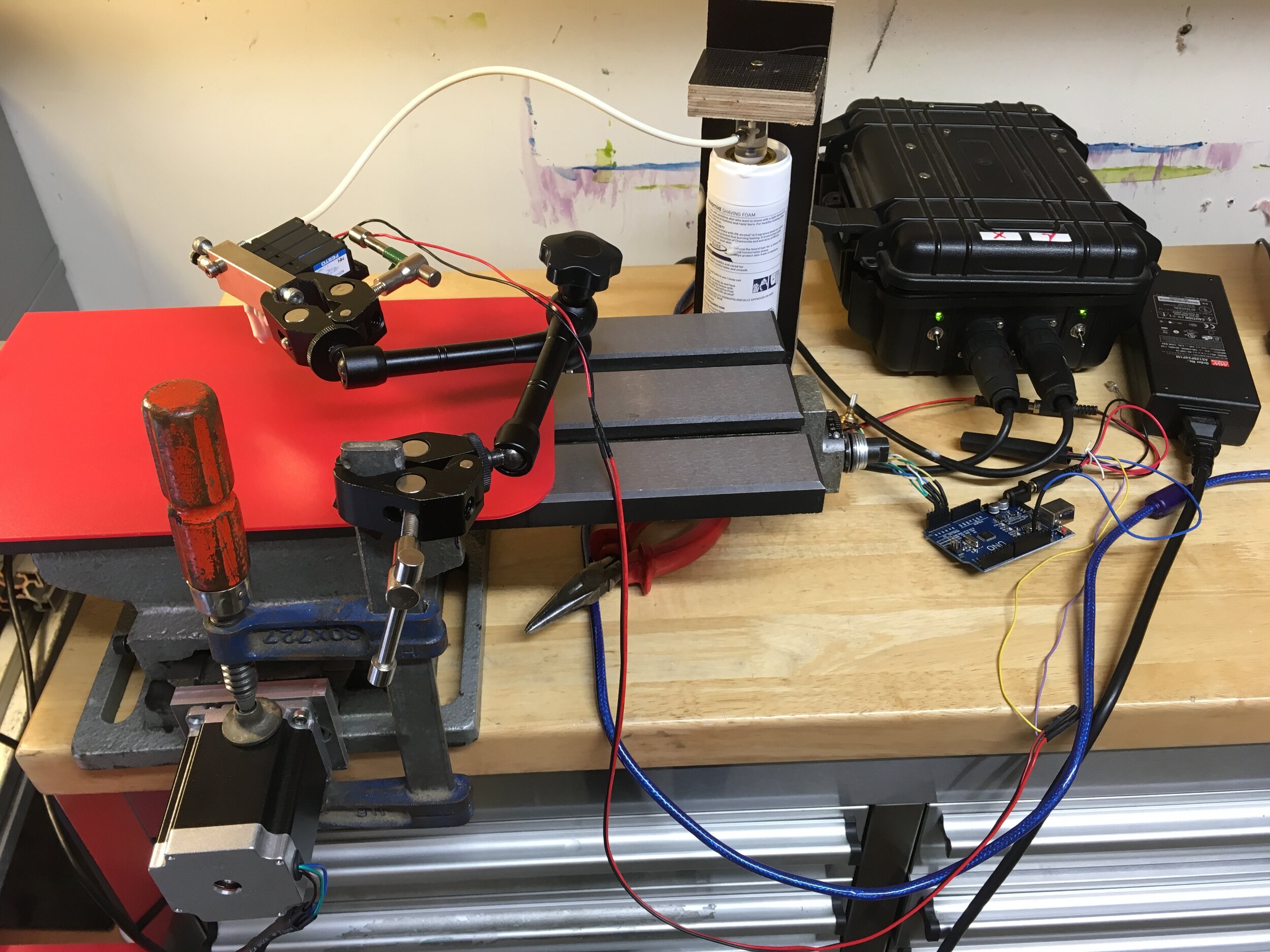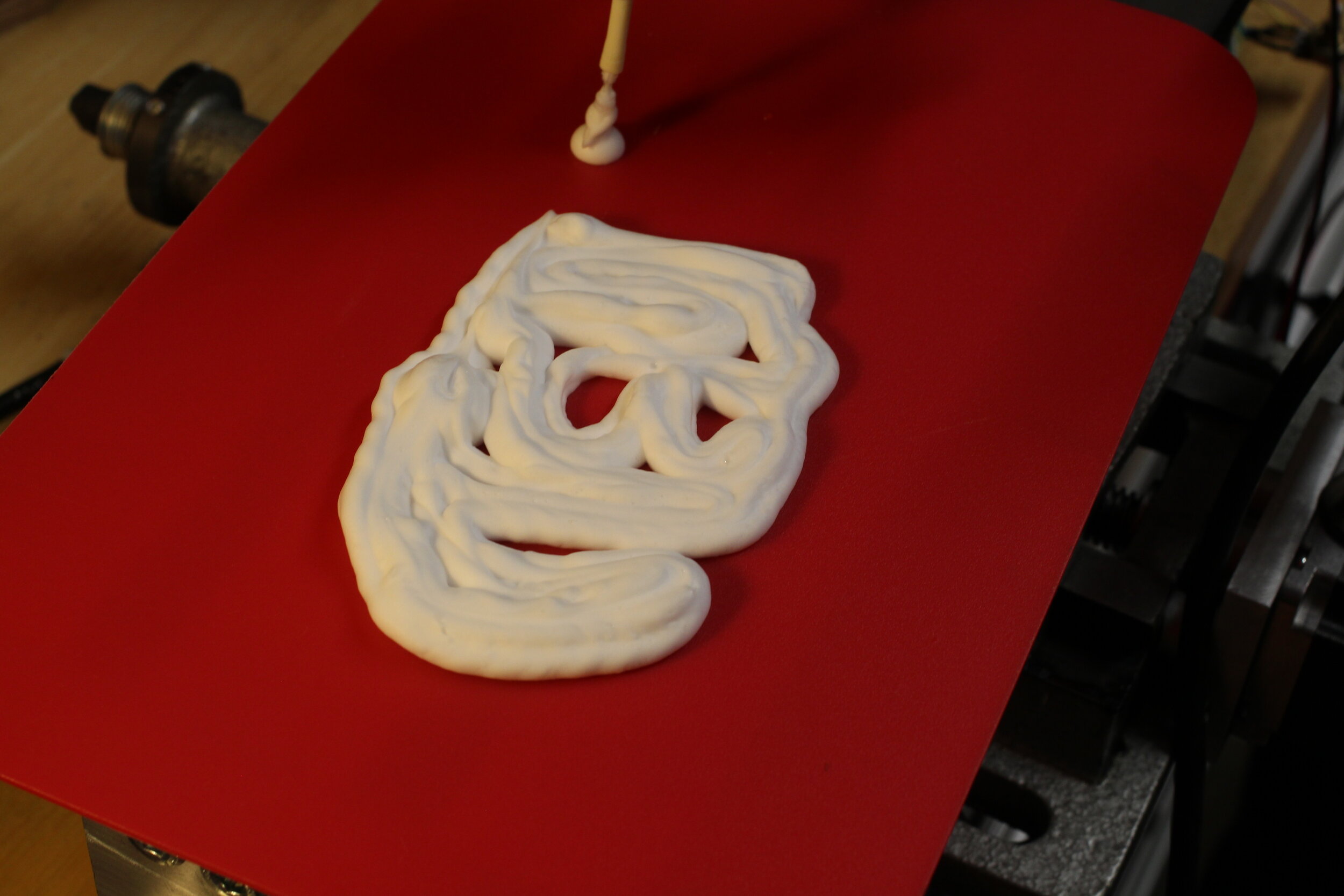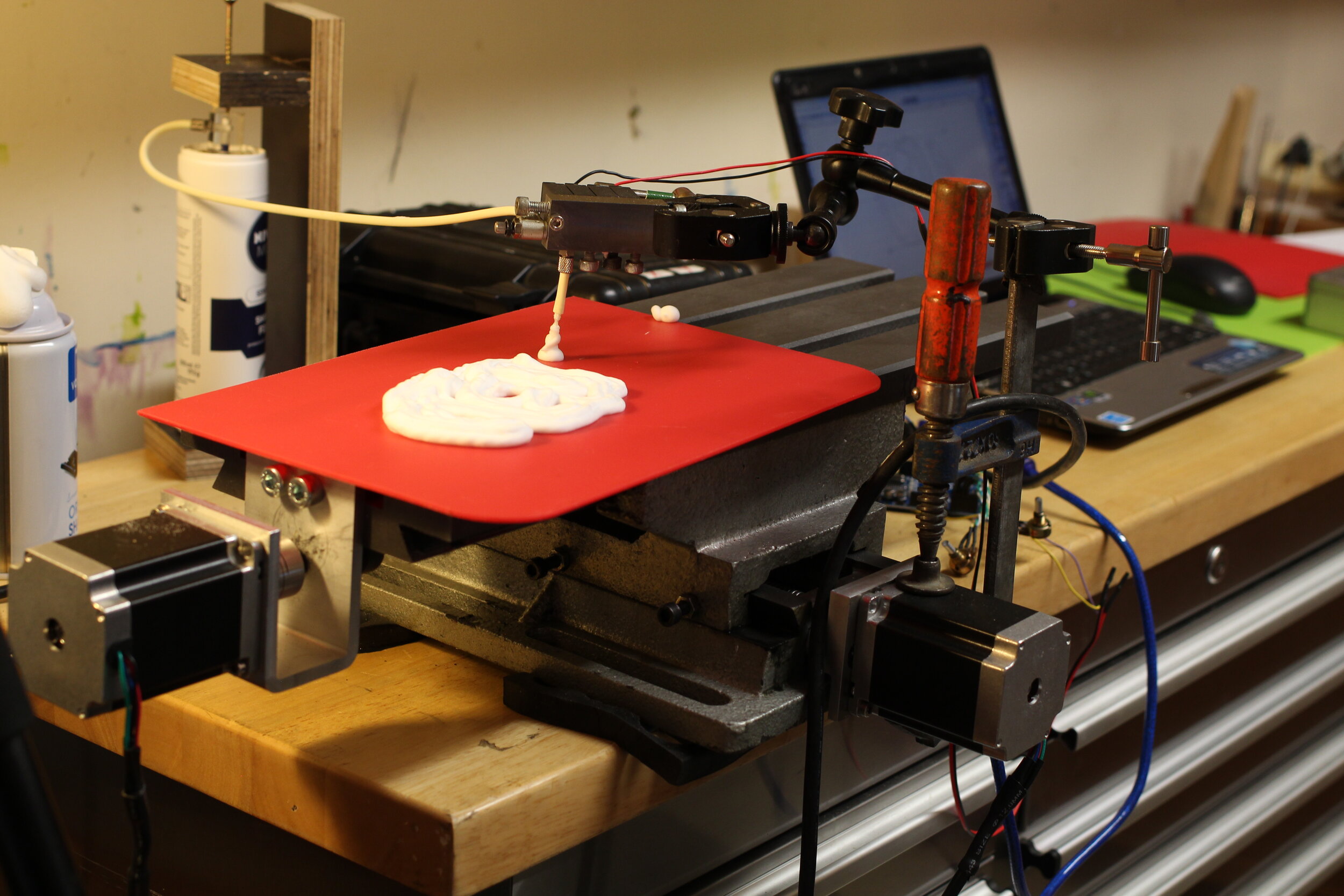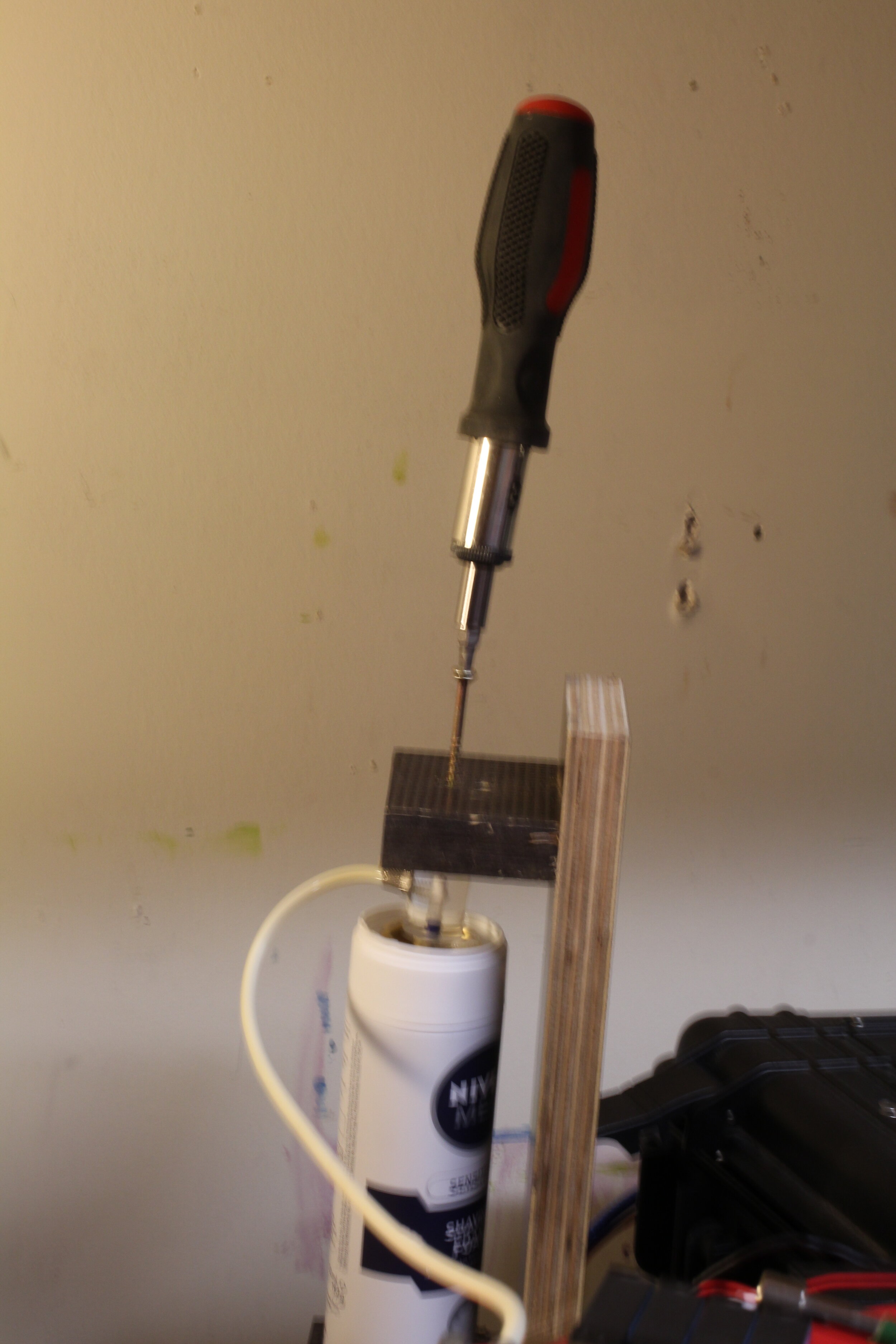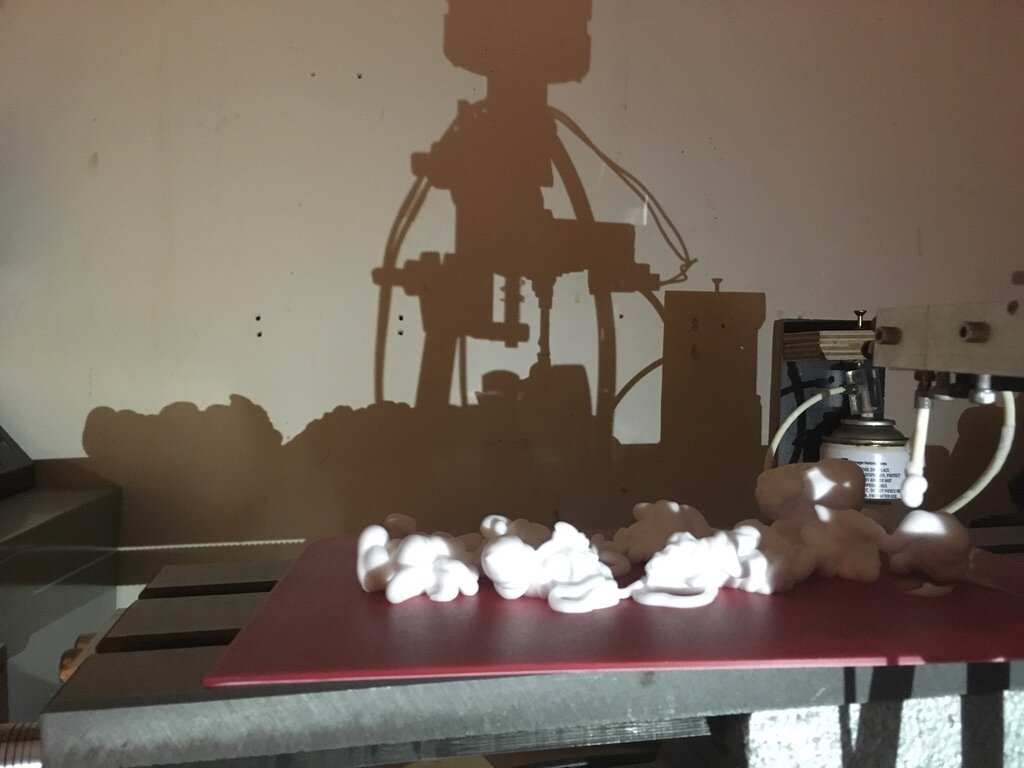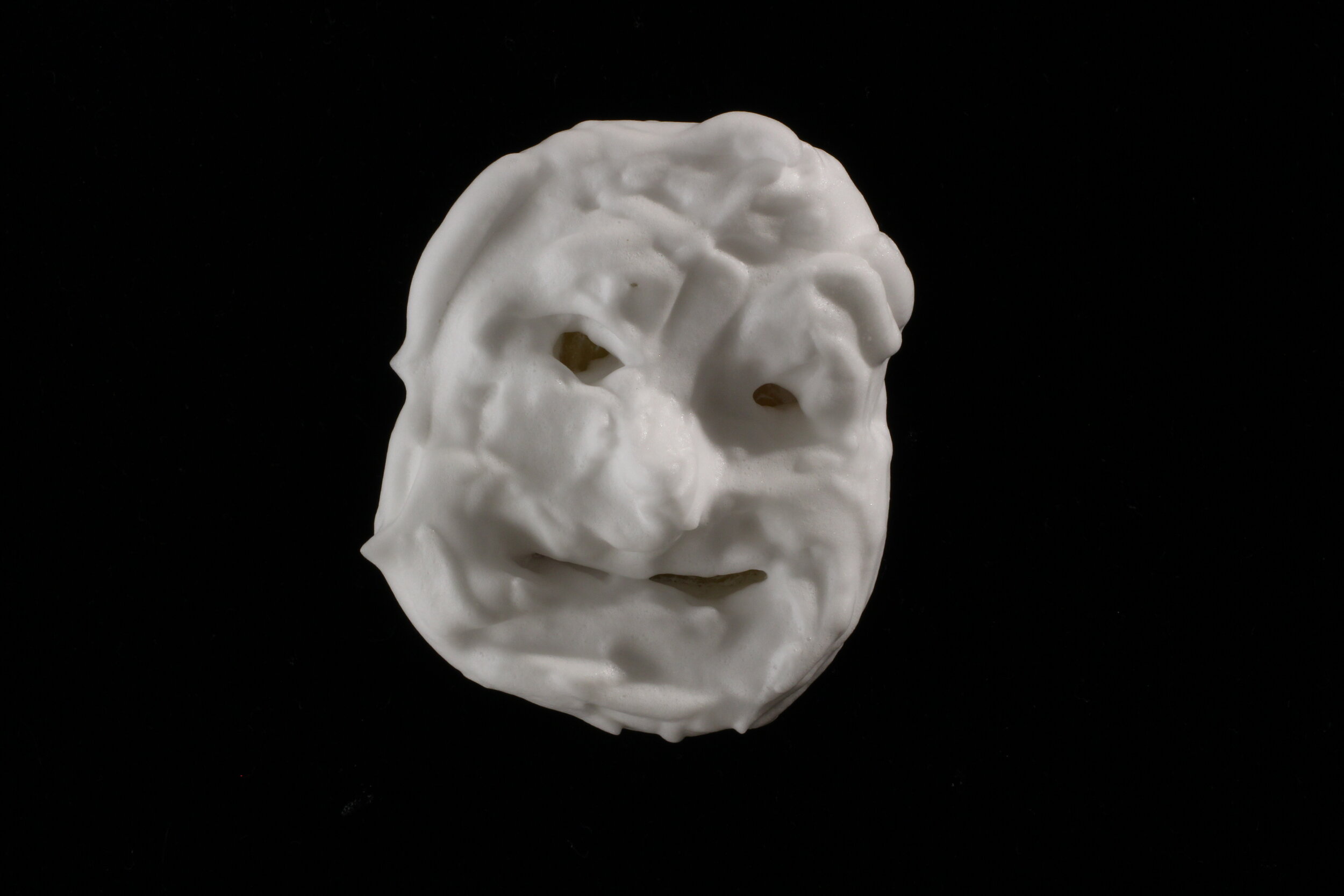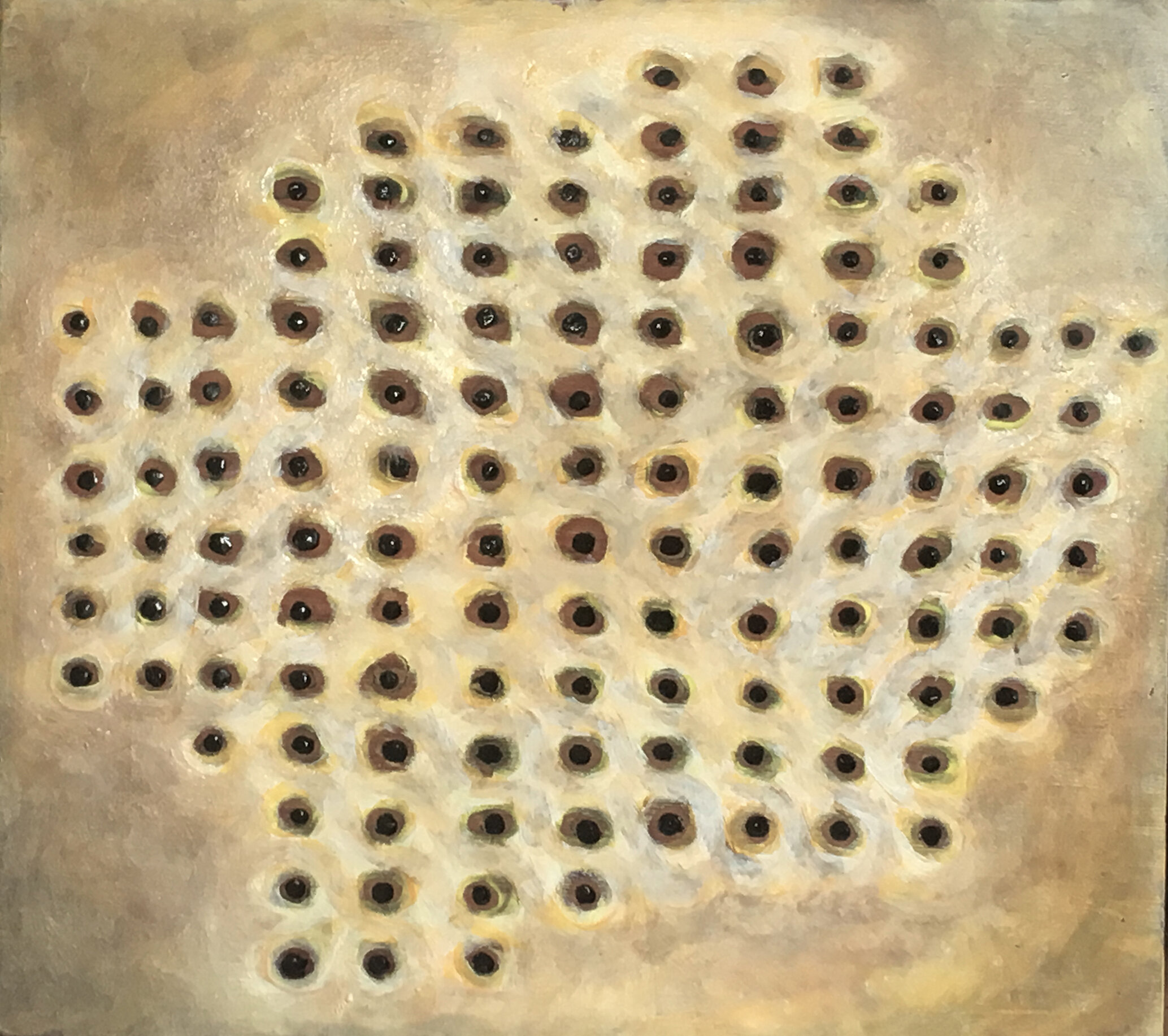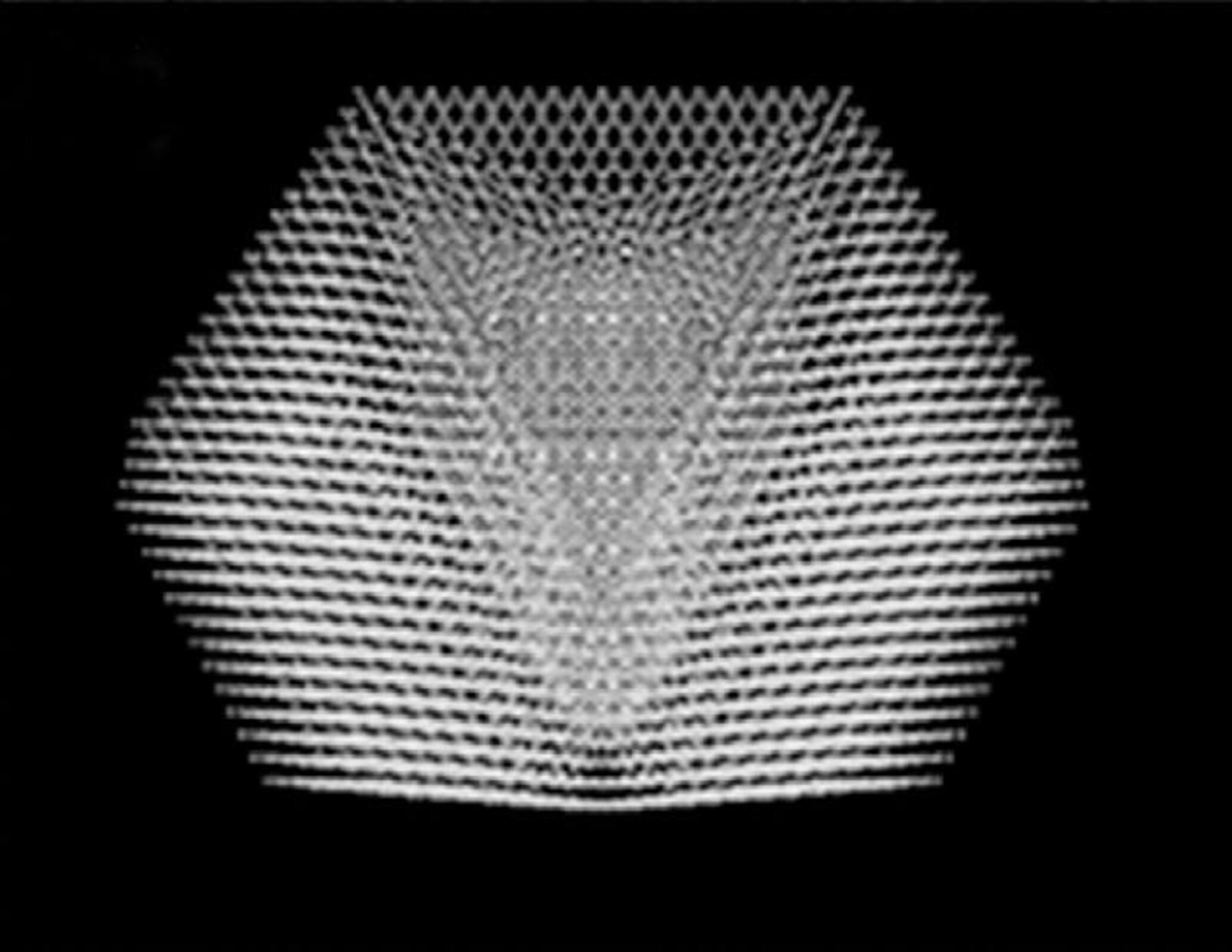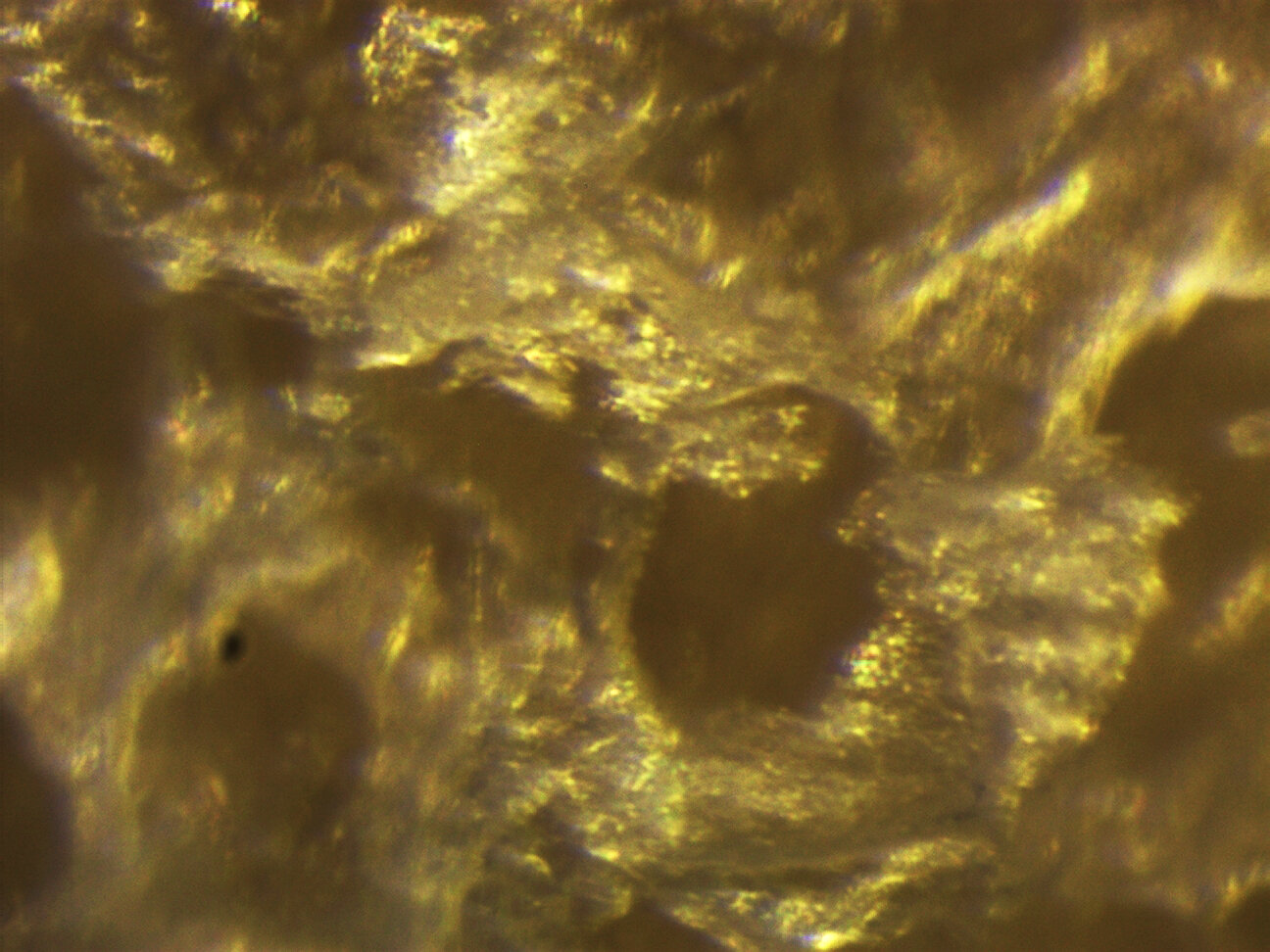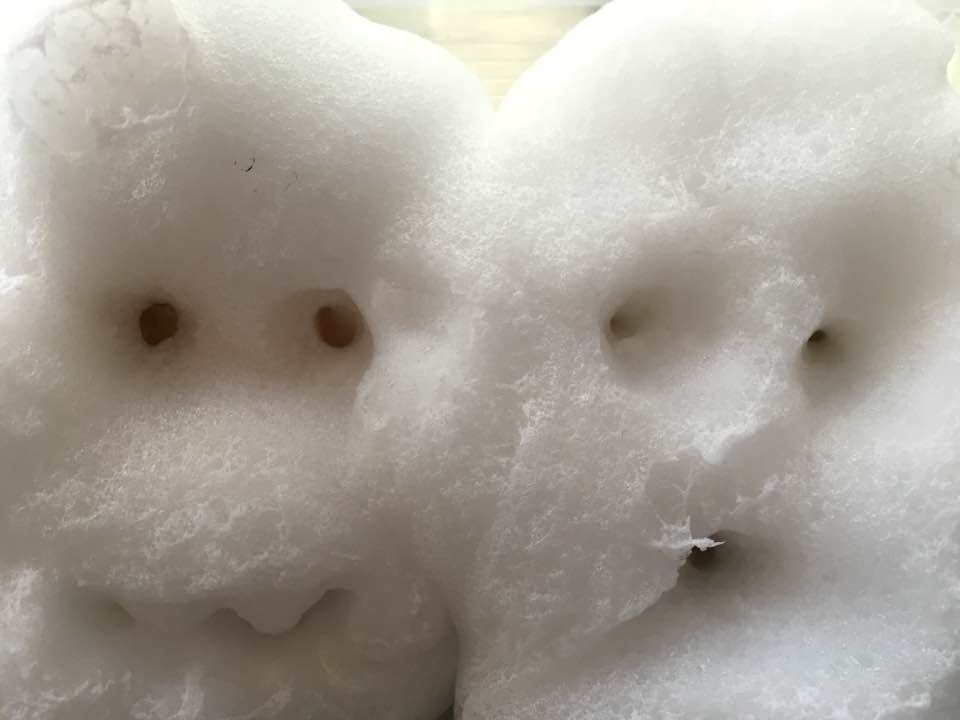Sensing Nanos
Raewyn Turner Brian Harris Toni Fröhlich 2022
Sensing Nanos Raewyn Turner & Brian Harris & Toni Frohlich
Many everyday objects, for example shaving foam, vitamins, soap powders and personal care products are nano-enabled and nano-enhanced imbuing them with magical properties. Imagine if they entered our bodies and converged with our inner worlds?
We placed shaving foam on potato slices which share similar mitochondria to the human brain. Mammalian neurons and the potato share a systemic molecular convergence. Elements of the membranes surrounding cellular mitochondria, responsible for transporting potassium ions in potato cells are identical with respect to their structure and function as those in the mitochondria of neurons in the mammalian brain and they react to the same toxins.
Shaving foam contains titanium nanoparticles in part defined by their intrinsic properties - but their extrinsic properties are determined by relationships, who they’re with, where they are and which system they’re in. What does the nanoparticle care about? What will it attach to?
The audio was scripted using synaesthetic correspondences to facial expressions. The video was overlaid with text excerpts from Plato’s writings on Socrates Dialogues on Friendship and the influence of friends in shaping each other’s evaluative outlook.
We’re exploring the possibility of humans sensing ultrafine nanotechnologies and in particular cross-sensing them as synaesthetic objects that have the potential to react with cells and biomolecules and become lodged in the brain and central nervous system.
If engineered nano-enabled products have never before existed in nature, how will they be perceived once they’ve been ingested, absorbed, inhaled and migrated towards our hearts? There they may become internal galaxies, catalytic, bound and clinging to our molecules. What synaesthetic correspondences will they manifest from our inner senses ?
Excerpts from The Dialogues of Plato (on Socrates Dialogues ) c. 428 B.C. – c. 348 B.C. LYSIS, or Friendship Trans Benjamin Jowett Encyclopædia Britannica, Great Books of the Western World 14--25 (1952). Ed Robert Manyard Hutchins. Audio played by KNAME
Sensing Nanos Images Raewyn Turner & Brian Harris & Toni Fröhlich.
We used slices of potato to represent the transportation of potassium ions in potato cells which are identical with respect to their structure and function as those in the mitochondria of neurons in the mammalian brain. We We hand made two side-by-side faces in shaving foam and recorded the changes in their expressions over time. The shaving foam we used contains titanium nanoparticles Titanium CI 77891. Although titanium nanoparticles in part are defined by their intrinsic properties - their extrinsic properties are determined by relationships, who they’re with, where they are and which system they’re in.
The Foam Robot which we made to create foam faces for Sensing Nanos. Raewyn Turner & Brian Harris. The robot's foam faces were flat but instead we found that the ambiguous shapes it made stimulated pareidolia and emotional interpretations.
We built and programmed an interveralometer for the stop motion for the video. The camera was run for 5 consecutive days for each take.
Raewyn synaesthetically scripted the expressions on each face to piano notes. Audio playing and recording by KNAME: Harley Rayner
Sensing Nanos:
Paper Abstract : Sensing Nanos September 2018 Raewyn Turner - Auckland, New Zealand r.turner@orcon.net.nz Brian Harris – Auckland, New Zealand harrisbrian@xtra.co.nz Toni Fröhlich – Basel, Switzerland toni.froehlich@alumnibasel.ch
Key words: optical microscopy, electron microscopy, cross-sensory experiences, nanoscience, mapping correspondences
ABSTRACT: Humans fabricate many kinds of nanoscale materials for use in daily life [1]. Imagine if the nano-enabled and nano-enhanced creations enters the human body and converges with one’s inner world. The properties of nanotechnology change depending on where the nanoparticles are, who they are with and which system they are in. On the one hand, hard and precise like a stone, and on the other hand soft and vague like the fog. It is everywhere and at any time, but far too small to understand it.
Our sensations are caused by nanoscale quantum processes since all receptors for light, smell, touch etc. originate from tiny quanta. So how can we understand this tiny world with our senses?
We are exploring the possibility of humans sensing ultrafine nanotechnologies and in particular cross-sensing them as synaesthetic objects that have the potential to react with cells and biomolecules and become lodged in the brain and central nervous system.
Few studies have considered the effect of nanotechnologies on the central nervous system, their enduring electromagnetic forces and thermal vibrations. Because time plays an important role in all physical and psychological processes, we may not notice the disruption and the transformations that follow the consequences of consuming nanotechnologies. Engineered nanotechnologies have never before existed in nature and may cause an alteration, a nano-enabled synaesthesia.
Metal‐based nanoparticles may interact with the nervous system [2]. We focused our attention on various personal care products which are used by many people. Certain brands of suncream contain nano zinc oxide and nano titanium dioxide. We found shaving foam which contains nanoscale "Titanium CI 77891".
Although titanium nanoparticles in part are defined by their intrinsic properties - their extrinsic properties are determined by relationships.
Mammalian neurons and the potato share a systemic molecular convergence [3] so we placed personal care products on two potato slices side by side and filmed the interaction in time-lapse video. The audio was scripted using synaesthetic correspondences to facial expressions. The video was overlaid with text excerpts from Plato’s writings on Socrates Dialogues on Friendship and the influence of friends in shaping each other’s evaluative outlook.
During our investigations we developed a robot to create shaving foam faces by moving a nozzle connected to shaving foam from a can, over the surface of a slice of potato. The positions of the motors and the flow of foam were controlled using stepper motors, from drawings converted into G code. We are interested in being able to relate the character of the face to algorithmic changes in the line drawings. We found that the ambiguous shapes made by the foam coincidentally stimulated pareidolia and emotional interpretations.
This is a work in progress.
Brief biography:
[1] A. Weir et al.: “Titanium dioxide nanoparticles in food and personal care products”, Environmental Science & Technology (46), 2242 – 2250, 2012.
[2] R. Yokel et al.: “Metal-based nanoparticle interactions with the nervous system: The challenge of brain entry and the risk of retention in the organism”, Interdisciplinary Reviews Nanomedicine and Nanobiotechnology (5), 346 –373, 2013.
[3] Nencki Institute of Experimental Biology: "Human brain and the potato: Similarities within the mitochondrial ion channels", ScienceDaily, 13 December 2011.
Presented at SPECTRA art + Science Symposium 2018 ANAT, University of South Australia Adelaide
Published: 14 October 2021 Leonardo MIT Press Journal Abstracts from the Spectra 2018 Symposium Part 3: Nano-Optics Leonardo (2021) 54 (5): 569–571. DOI: https://doi.org/10.1162/leon_a_01970
Our First Exploration into Sensing Nanos :
Seeing Whispers --Sensing Nanotechnology. Raewyn Turner & Brian Harris. & Toni Fröhlich
2018 The nature of Nano—How Can We Sense a Tiny Little World Raewyn Turner, Toni Fröhlich (Swizerland), Brian Harris, Art Science presentation V International Congress Synesthesia, Science & Art. Spain 18-21 may 2018 Area of the contribution: Artistic / New Technologies and synesthesia. Palacio Abacial y Convento de Capuchinos, Alcalá la Real, Jaén, Spain, 18-22 May 2018 http://www.artecitta.es/Vcongreso/abstracts18.html Download presentation here
The Nature of Nano – How can we sense a tiny little World?
May 2018
Toni Fröhlich . Basel, Switzerland . toni.froehlich@alumnibasel.ch Raewyn Turner - Auckland, New Zealand r.turner@orcon.net.nz
Keywords: nanoscience, fine arts, perception, imagination, cross-linked senses
ABSTRACT: It is difficult to grasp nanosciences. There is something between wave and particle. On the one hand hard and precise like a stone, and on the other hand soft and vague like the fog. It is everywhere and at any time, but far too small to understand it. Molecules, nanoparticles or crystals can create complex structures [1], such as man-made architecture. We look at them through sophisticated microscopes. But what we see is not the reality, just an interpretation. The interplay of our receptors with the olfactory molecules defines how we smell [2]. And the colours we see originate from colour pigments or can only be faked by means of a nanostructure [3]. Our sensation are caused by nanoscale quantum processes. So how can we represent this tiny world with our senses?
We want to discuss how to visualize nanoscale objects and processes through art. We need to serve all our senses to understand this tiny little world. Because in this world, all sensory impressions have their origin in physical and chemical processes. And all the senses are interwoven.
Brief biography
[1] M. J. Yacamán, J. A. Ascencio, H. B. Liuand and J. Gardea-Torresdey: “Structure shape and stability of nanometric sized particles” , Journal of Vacuum Science & Technology B (19), 1091 – 1103, 2001.
[2] S. E. Stitzel, M. J. Aernecke and D. R. Walt: “Artificial Noses” , Annual Review of Biomedical Engineering (13), 1 – 25, 2011.
[3] H. Wang and K.-Q. Zhang: “Photonic Crystal Structures with Tunable Structure Color
as Colorimetric Sensors” , Sensors (13), 4192 – 4213, 2013.
Audio playing and recording by KNAME: Harley Rayner
Facial expressions with synaesthetically - mapped audio correspondences
Time Piano notes :
00.00………F4
0.07………. D4#
0.08………. A3#
0.10……….. G4#
0.11………… .G4 + G3 + G2
0.14………...A3
0.17…………C3#
0.21…………A2
0.23………..F6
0.27………..A5
0.33………..A3#
0.38………..F3#
0.44……….F3
0.46……….D2
0.53……….C3#
0.57……….F2# + F3#
0.59………D3#
1.05……….D3
1.08……...C3#
1.15……….C2#
1.19……….D2#
1.25 ……..C2#
1.41……….G1
1.43………A3#
1.53………A2#
2.04……..D2
Raewyn Turner 2017 German mixed technique, ink, on wood. Raewyn found correlation between the pattern of her photism and K.Koga’s TEM image of a gold nanocrystal.2006.
Fröhlich. Optical microscope image of a potato slice with shaving foam 550 um W (Thanks to the Swiss Nanoscience Institute).
Turner & Harris. Our first shaving foam faces on potato slices
Research and Residency at the Centre for Environmental Implications of Nanotechnology
Sensing Nanos is a development of the STEEP project perceptualising nanomaterials and focused on air borne nanomaterials
Mark Wiesner, Director, CEINT Centre for Environmental Implications of Nanotechnology, at Duke University, USA. invited me to an artist residency in 2015. I invited Brian Harris to collaborate on this residency and in the works that may proceed from it.
My objective is to work on perceptualisation, through art works, of invisible airborne particles to shape an understanding of sensemaking. I breathe the sky into myself. Humans, animals, soil, water, air, machines, buildings participate in the cycle of energy and breath emitting very fine particles and molecules into the atmosphere affecting the clouds. An atmosphere awash with particles derived from living organisms has aerosol effects on the clouds and precipitation.
In our collaborative work our longer term collaborative plan is to work with synchronised digital synaesthesia to create immersive sensory art experiences that question sense constructs, and to make a different sensing in relation to global dynamics.
If we apply engineering principles to biology in design, how will it affect human sensing of the world? If we can smell. taste, hear and feel the fullness of the atmosphere could we know its present meanings ?
We're inquiring into sensing and perception of the environment by cultivating an awareness of the sensory observation of place in a time of uncertainty about climate change and global ‘markets’. Our sense of identity and belonging to a place and a culture includes the smell, taste, sounds and feel of home: the familiar background cypher that we only notice when it disappears or changes from the place where we stand.
Article in CEINT Research Blog Kara Manke December 9 2016 When Art tackles the Invisibly Small
After the residency at CEINT I wrote this essay, distilling what I’d found out in the CEINT labs
The nature of nanoparticles © Raewyn Turner 2016
Everything about nanoparticles varies: Colour, size, weight, personality, style, movement; what they’re attracted to, what they like, and what they desire. They may be red, yellow, grey, blue, several colours. Humans can’t see them but by a trick of dark-field microscopy, they can be seen like beautiful stars in a starry sky in all their glorious colours. They can be ‘seen’ by other microscopes too, by touch ( the AFM needle touches them and makes an impression of their shape).
When they’re first dusted from their container into water or the product they’re intended for, they’re pristine. They’re born metal and from chemical reactions and heat are separated from their origins as tiny but powerful particles.
They love to attach to microorganisms, environmental surfaces, to get into plants, into soil and to be in water, but don’t like sea water.
At 1mm to 200mm or sometimes larger, they start out as themselves but quickly take on behaviours depending on where they are and who they’re with. From then on what they do and how they act is determined by where they are in the world, what they cling to, or what clings to them and what they may encounter. If they cluster around others like themselves they slow down; but if coated with citrate they don’t huddle together, they can move off freely in which case they’ll have exclusion zones that make them look like each is circled by an inner-tyre tube. The tube can sometimes pop and they’ll get caught up with the soil, weeds, molecules or other particles and get stuck to them. A tyre tube with mesh is stronger and lasts much longer and is harder to deflate. But usually when they’re in any environment they’ll cling to anything they like: soil, particles, because they’re so sticky.
Nanoparticles and other particles are usually negatively charged. Pesticides find nanoparticles particularly attractive and won’t leave them alone, dancing day and night, touching them and generally making pests of themselves—hitching a ride on their back, using them as their wheels, until the nano sticks to root, soil or leaves and finds a home within plant or is consumed by crustaceans, worms, other c-elegans and fish.
They don’t change their shape and unlike molecules they’re not flexible and the carbon nanotubes are extremely strong. Triangles, squares, dots they care about which surface they want to stick to. They’ll roll, flip or drift towards the surface they like, but once there they won’t come to equilibrium with a surface, they refuse to obey the laws of thermodynamics like other molecules do. They’ll cling to algae, giving nothing of themselves but sticking onto its surface and become locked into the flesh of plants.
The gold nanoparticle rewards the plant’s roots by bringing along extra particle sweets that make the plant grow voluptuous and ripe; others lodge in the gills, gut, brains of fish and c-elegans worms and cause deformities. Cerium enters the plant and eats the light within its leaves to make itself so decreasing the plants photosynthesis.
Different sizes of gold nanos reveal themselves as a range of beautiful colours in water, carbon nanotubes conduct tiny electrical signals and mix with conductive plastics, and copper nanos will absorb and re-emit X-rays into patterns.
Smaller than the wavelengths of light, nanoparticles are on the verge of quantum effects—are they here or there? Are they communicating with each other instantaneously?
After the media hype and promise that nanoparticles and their properties would be harnessed to create self-assembling robots, the expectations have been trampled underfoot and have an odour similar to the reeds that died from toxic exposure to low concentrations of gold nanoparticles. There are no nanorobots and we seem to now be at a period of disappointment; not only that we don’t yet understand their behavior.
They’ve existed longer than anyone on this earth. Unlike chemicals that reach a steady state that we can understand thermodynamically, nanoparticles are kinetic. They’re a verb rather than a noun and involve time.
They are in part defined by their intrinsic properties ie gold, silver, copper, iron, plastic but its charge depends on its environment, who its absorbed or been absorbed by ( eg C02) what it cosies up to, whether its free floating; these factors determine its extrinsic properties; irreversible, the nanoparticle won’t let go of the macromolecule that determines its extrinsic properties. These won’t dissolve over time, they’ll exist for a very long time. Occasionally the nanoparticle is used to deliver a nutrient or a toxic package in which case the bonds will unravel like the cut string around a gift. (As the gift is received so is the nanoparticle?)
Placed as they are between molecules and atoms, and gross materiality, their function will be understood enough over the next few years to enable both implication and application. Each nanoparticle will have been observed sufficient to determine its values, predict its behavior and know what it cares about and what it will cling to.
AFM = atomic force microscope
X-Rays = light with very small wavelengths
